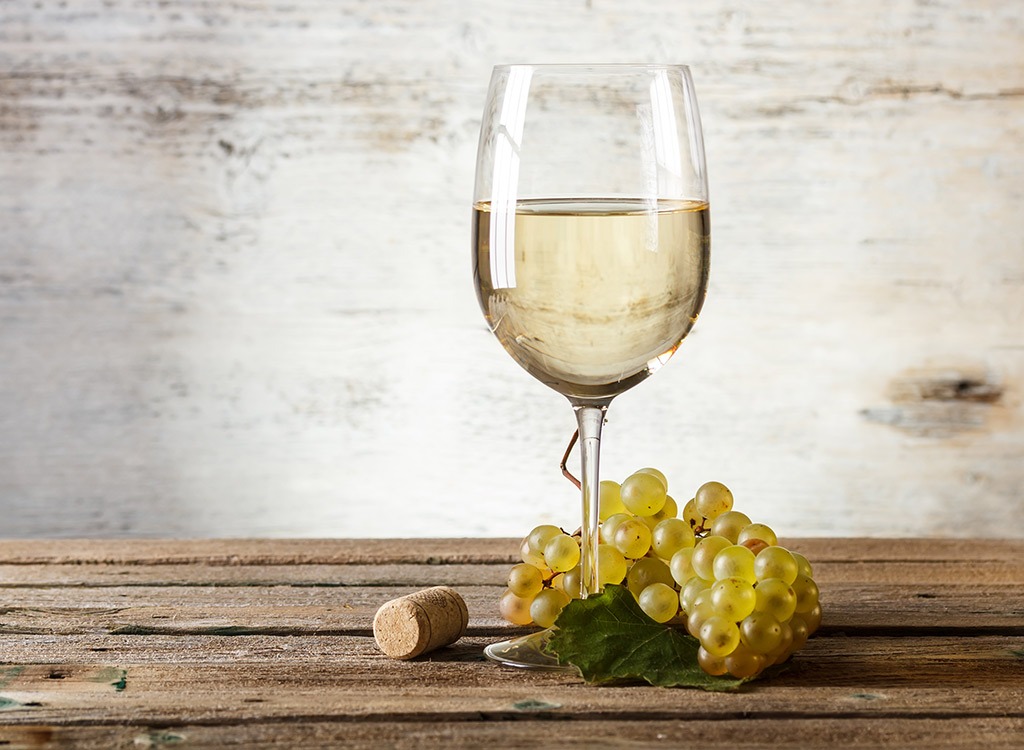Here's the Perfect Temperature to Store Every Type of Wine

Buying and enjoying wine is one of life's ultimate joys. But, knowing how to store your beloved bottles can be a lot less exciting—and sometimes, really confusing. Not all wines should be preserved the same way, which makes it tricky to know exactly what to do with a bottle of red vs. white, sparkling, or fortified.
Considering that glass bottles are sensitive to both light and temperature, how you store your vino can dramatically impact its flavor. So, we spoke with Corey Phillips, beverage director of Atlanta's Nina + Rafi, to get the nitty-gritty on wine storage to make sure we're all doing it right.
Here's how to store every type of wine so it tastes amazing when you open it.
White wine

White wine should be stored in a cool, dark place. Not everyone has the luxury of a wine cellar, but Phillips suggests storing white wine at around 55 degrees Fahrenheit. "Keeping it in your refrigerator is perfectly fine, but what you should do before opening a bottle is to set it out and let the temperature come up a little bit," Phillips says. "If it's too cold, it's going to take away from the flavor profile."
If you do store your wine in the refrigerator, don't do it for more than a couple of months. The fridge is set to a cooler temperature than what's optimal and can interfere with the wine's flavor. If you want to store your wine at the perfect temperature, you can invest in a wine cooler, too.
One of Phillips' favorite things to do at home is to stick a bottle of Vinho Verde in the freezer about 45 minutes before drinking it to give it a slushy texture. "It's not for everybody, and I'm okay with that because it's what I enjoy," he says.
When it's time to store your white wine after opening it, it's best to use it within a couple of days. "With more of your naturally-made wines, like your biodynamic, organic wines, they're going to hold up a little longer, and you can see those being open, up to a week if not longer than that," says Phillips. "But really, within a couple of days, you want to consume that bottle." Challenge accepted.
Red wine

You might be tempted to store red wine on a rack on top of the fridge, but this is something you should stay away from. "You can get more heat on top of the fridge, which is bad for the wine," Phillips says. An ancillary issue is that the vibration and shaking of the fridge can cause the sediment in the wine to not settle, not to mention how risky it is for bottles to roll off.
Ideally, you should store your red wines in a cool, dark place around 60 degrees Fahrenheit. A low spot in your pantry would work great. If you plan on using your bottle within a couple of weeks, you can store it on the countertop, as long as it is out of direct sunlight.
After opening a bottle, Phillips suggests storing any leftover red wine in the fridge. But as with the white wine, let it come to room temperature before drinking it again.
Sparkling wine

Don't store your sparkling wine in the fridge, unless you plan on drinking it pretty quickly (within a couple of weeks). Store it in a cool, dark place. "And then, before you're going to serve it, maybe an hour before, toss it in the fridge and get it to the temperature that you want, somewhere around 50, 55 degrees," Phillips says.
Wine-based aperitifs and fortified wines

The most important thing to know about this miscellaneous category is that once the wines are open, they have to be stored in the fridge.
Most wines should be stored on their sides to keep the cork from drying out and letting oxygen in. Sparkling wine, on the other hand, should be kept upright. "For at-home use, you could obviously go a little longer. A month or two would be fine, but after that, you're going to start to lose the quality and characteristics of the product," Phillips says.
Other wine storage tips

Most wines should be stored on their sides. "At home, you want to keep your cork moist, because you don't want air seeping in," says Phillips. "Once the cork dries out, it'll allow air to seep through, and that's what you don't want happening is air getting into the wine." If oxygen gets in, the wine will oxidize and cause the flavor and aroma of the wine to spoil.
However, sparkling wine (excluding Champagne) should be stored upright. You don't want the cork of a sparkling wine bottle to get too wet, causing the cork to break down and let oxygen in.
At the end of the day, wine is wine. "It's meant to be enjoyed while relaxing with yourself or family or friends, so don't let it overwhelm you if your wine isn't at an optimal temperature," Phillips says. "Everyone has different preferences on what they like, so find what you like and do that."








